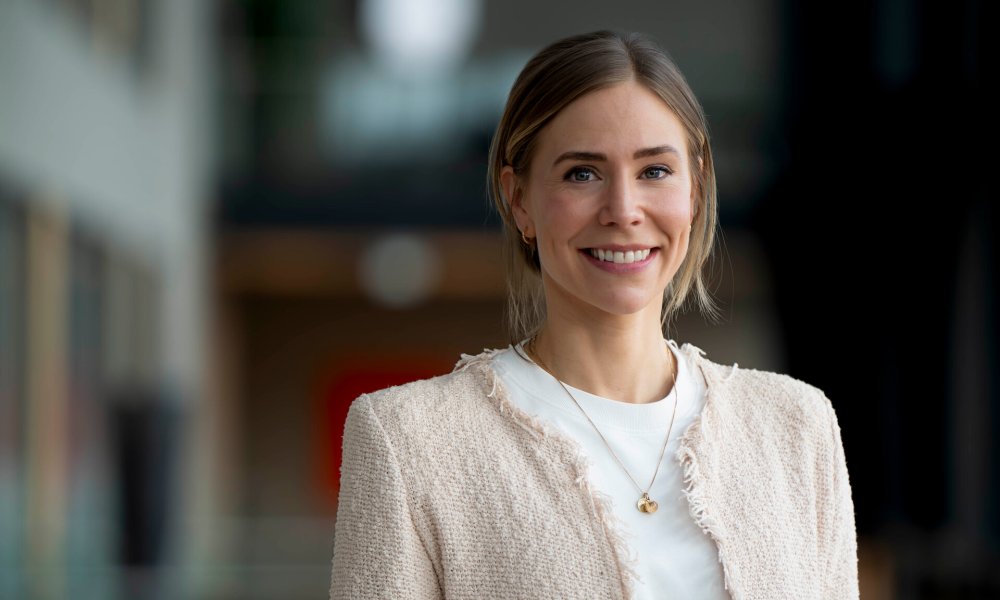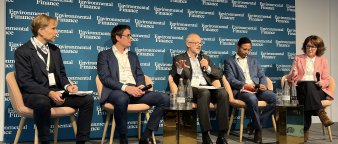Investing involves risk. Products within alternative investments are aimed solely at professional investors.
Being part of the infrastructure team, what is your objective, and what is your particular role?
The team's primary objective is to manage Storebrand's investments in infrastructure through Storebrand Infrastructure Fund. This responsibility includes a variety of tasks, where identifying and executing on investment opportunities in line with the fund's mandate is central. In addition, we spend time on tasks related to management of investments, client deliveries, sustainability, and fund administration. Within the team, I have a special focus on sustainability as well as client dialogues. However, we are a small team and are all very much involved in both investment opportunities and client contact.
In October, we strengthened the team with an investment manager, Dennis Reichhardt, who has solid investment experience. Storebrand has been working with infrastructure since 2021, and in addition to our work on investment opportunities, we are also focused on business development. It's incredibly exciting to be involved in shaping Storebrand’s activities within infrastructure in the years to come.
Which infrastructure projects do you choose to invest in and why?
We invest in sustainable infrastructure assets within three themes; energy transition, decarbonisation and digitalisation. Geographically we focus on Europe and North America. Within our mandate, we prioritise providing a diversified exposure to infrastructure investments that actively contribute to or align with the development towards net-zero emissions. We invest with a long time horizon, and it is crucial that the investments we make today are robust in the future.
Some examples of the sectors we invest in are renewable energy production, storage, electric modes of transport, district heating, and fiber networks. To gain exposure to the attractive characteristics of infrastructure, such as diversification, stable cash flows, and linkage to inflation, we focus on investments in the core/core+ segment. This means that the investments usually have a low to medium risk profile.
How did you become interested in infrastructure? Has your previous positions led you to it?
I would say it was a combination of past experience and personal motivation that sparked my interest in infrastructure. While I was familiar with the asset class and its attractive financial characteristics through previous positions, focusing on asset allocation and fund selection, it was the unique impact potential in terms of directing long-term private capital to critical areas of the energy transition that triggered my personal motivation for infrastructure investing. I see it as a great privilege to work with an asset class with a meaningful objective and strong momentum in a firm with a such a strong commitment to sustainability as Storebrand.
2023 was an eventful year. How are infrastructure investments affected by market fluctuations, inflation, and high interest rates?
The cash flows from unlisted infrastructure assets are expected to remain relatively stable during periods when other markets and asset classes are characterised by uncertainty and volatility. A key reason for this is that the underlying demand for infrastructure services or products, such as electricity or internet, is not dependent on the economic cycle. Moreover, the price is often regulated or contractually fixed for a long period. This means one can expect stable earnings and dividends even through weak market conditions. Our current portfolio has demonstrated such expected resilience recently.
The significant fluctuations in interest rates combined with general market uncertainty have, however, contributed to lower transaction activity in the infrastructure market over the last two years. When interest rates rise sharply, it affects the value of long-term cash flows. Higher inflation will, then again, lead to increased future cash flows for infrastructure investments with cash flows linked to inflation. After a period of uncertainty, we now see signs that transaction activity is increasing, and we have an interesting pipeline of attractive investment opportunities.
What is the interest in infrastructure among institutional investors?
The global market for unlisted infrastructure has grown significantly over the past ten years. The total assets under management (AuM) for the asset class now exceed 1 trillion dollars, affirming its appeal among institutional investors. Although recent years' market conditions softened the growth somewhat, the asset class is expected to continue growing over the coming years.
While the asset class may be relatively new for some of the smaller and medium-sized investors in our home markets, most of the largest institutional investors in the Nordics already have infrastructure as a building block in their institutional portfolios. In a Nordic context, Danish investors were early to invest in infrastructure. We experience that investors appreciate the combination of the financial and diversifying properties of infrastructure, along with the opportunity to make direct impact.

To achieve net-zero emissions by 2050 requires a tremendous amount of capital. How can investments in infrastructure projects contribute to that?
Reducing global emissions to net-zero before 2050 will require a massive transition in how we produce, transport, and consume energy, in addition to significant behavioural changes. The transition requires large investments in the expansion and adaptation of infrastructure.
According to the "Energy Transition Investment Trends 2023" report by BNEF, annual investments of over 4 trillion dollars in "energy transition" are required until 2030 for us to reach the goal of net-zero emissions by 2050. It amounts to a tripling of annual investments compared to 2022 levels, and a five- and six-fold increase in annual investments during 2030-2040 and 2040-2050, respectively.
BNEF has identified several key drivers for achieving net zero, and amongst them investments in renewable energy, power transmission, and electric transport constitute the largest investment areas up until 2030. These are some of the main focus areas in Storebrand Infrastructure Fund.
Are there other players offering infrastructure strategies to institutional investors? Do the products differ?
In a global context there are many providers of infrastructure funds, and the offering has grown hand in hand with the market over the past 5-10 years. You have dedicated infrastructure managers as well as large fund managers with broad product ranges, including infrastructure. Here in the Nordics, the offering of infrastructure funds is more limited, but growing.
The biggest differentiator between the various managers is probably the risk and return profile of their respective product. However, there are also differences in the sectors and geographical regions they focus on. Players with a higher risk profile will have a higher exposure to risks such as development risk, price and volume risk, or exposure to future growth. Some focus on Nordic investments, and others have a global focus.
At Storebrand, we focus on providing exposure to the financial characteristics that are unique to infrastructure and contribute to the diversification of an investment portfolio. These characteristics are strongest within the core/core + segment and become weaker the higher up the risk scale one goes.
Looking ahead, do you have any exciting projects underway?
We are in the middle of an exciting period for Storebrand Infrastructure. We are continuously working on deploying more capital to investments in our first fund, Storebrand Infrastructure fund, and we hope to announce several new investments throughout this year. While the transaction market slowed down following the sharp rise in interest rates and inflation over the past few years, we are now seeing positive signs as buyers and sellers are once again finding each other at new price- and return levels. We are looking at interesting opportunities, both through the AIP partnership and through other potential partners, and have a promising pipeline.
As we progress in deploying our first fund, we are also preparing to launch our next fund, Storebrand Infrastructure Fund II (SIF II). SIF II will largely be a successor to the first fund, focusing on sustainable infrastructure investments within the core/core + segment. We look forward to taking the new product on the road and begin fundraising later this year.







